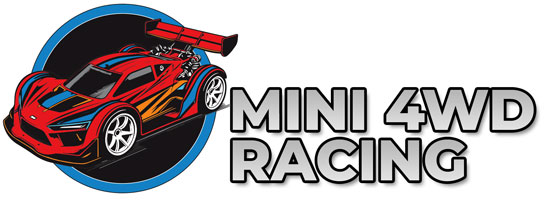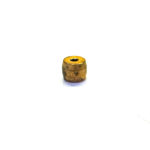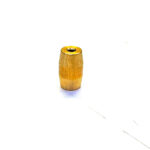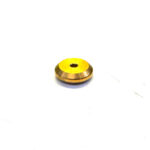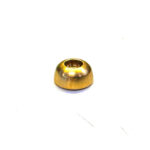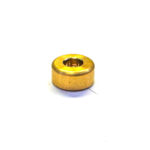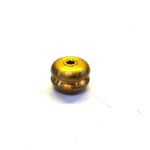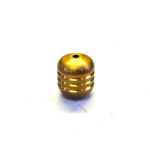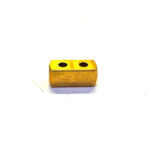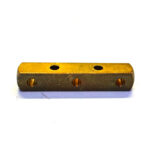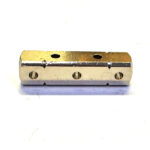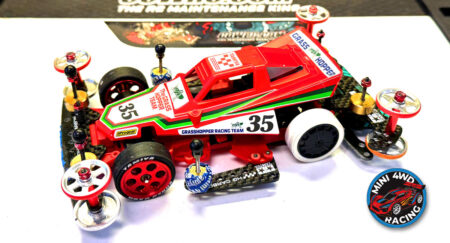Tamiya Mini 4WD Damper Weights
Mass damper weights are one of the most important tuning components in Mini 4WD racing, especially on technical tracks with steep slopes, sharp elevation changes, and high-speed jumps. Their job is simple: absorb excess kinetic energy when your car lands or rebounds, keeping it planted instead of bouncing, skipping, or flipping out of the lane. When the chassis slams down after a jump, the mass damper moves independently for a split second, converting some of that impact energy into controlled motion rather than chassis lift. This reduction in bounce improves stability, prevents “course outs,” and lets you push higher speeds with more confidence.
Proper placement is everything - front-mounted dampers help calm nose lift on short jumps or double-rollers, while rear-mounted dampers stabilize landings on longer straights and larger slope sections. Some racers even run dual systems for ultimate control on harsh tracks like 3-lane Japan Cup layouts.
It's also good to note that even though the Short Bar and Long Bar look the same, they are different sizes (and dramatically different in weight). Keep that in mind when adding these to your Mini 4WD vehicle.

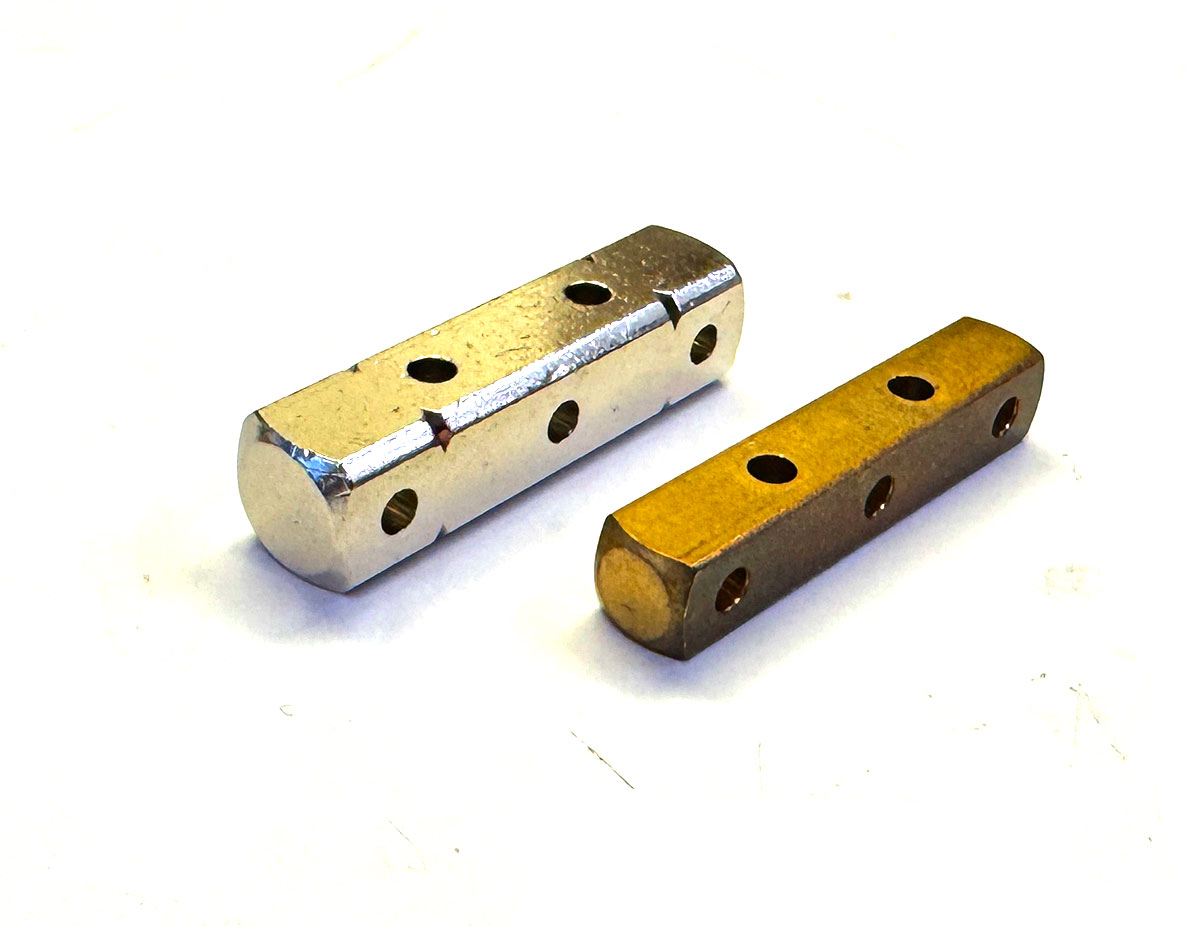
Choosing the Right Weight
Choosing the right weight depends heavily on the track layout and your car’s balance. Light tracks with gentle slopes or mostly flat sections often need only small 1.5–3g dampers to reduce micro-bouncing without slowing acceleration. On more aggressive circuits with high banks, Dragon Backs or major step-downs, heavier 6–12g damper sets (or combined multi-weight systems) become essential for absorbing those hard impacts.
Barrel-style dampers are great for centered mounting with predictable behavior, while plate dampers offer wider weight distribution and faster reaction on long jumps.
Soft tracks with lots of rhythm sections benefit from slightly lighter dampers to maintain speed, while technical tracks with tall elevation changes practically demand heavier setups for consistent landings. As with all Mini 4WD tuning, testing is key - start with a medium weight (around 6g total), run a few laps, and adjust up or down depending on how your car behaves over bumps and jumps.
One final thing to note: the less weights your car has, the faster the weights are going to respond. Heavier weight typically makes the weight distribution more sluggish, or less reactive.
Tuning Tips
Tip #1: Match Damper Weight to Track Intensity
Always tune your dampers based on the largest jump or slope on the circuit. Small, flowing tracks with mild bumps only need light 1.5–3g weights to control chatter without slowing the car. Medium difficulty tracks - those with step-downs, Camel Backs or curved slope areas - often respond best to a combined weight of 4–8g. For high-intensity Japan Cup–style tracks with big elevation drops like Dragon Back, Stepper or multiple waves, step up to 10–12g or even dual dampers. If the car still bounces or “skips lanes” after landing, go heavier. If the car feels sluggish on straights, go lighter.
Tip #2: Adjust Placement for Specific Behavior
Front-mounted dampers reduce nose lift and calm the car during short hops, quick transitions and roller entry zones. Rear-mounted dampers are best for long landings, preventing tail bounce and keeping the rear planted when exiting a major slope. Placing dampers on the sides (side mass damping) improves left-right stability and is especially effective on 5-lane tracks where wall impacts are common. When in doubt: front for small jumps, rear for big jumps, sides for overall stability.
Tip #3: Use Sliding Dampers for Big Tracks, Fixed Dampers for Speed
Sliding-style mass dampers (like Tamiya’s barrel sets) allow more movement, which absorbs more energy, perfect for large jumps. However, this also steals speed. Fixed or plate-style dampers move less but react quickly, making them ideal for medium tracks or speed sections where too much oscillation would hurt time. You can mix systems too: sliding dampers in the rear for control, fixed weights in the front for balance.
Tip #4: Optimize Height and Mounting Angle
Lower-mounted dampers hit harder and react faster because their center of gravity is closer to the chassis. High-mounted dampers (common on aero bodies or MA/MS chassis) react slower but add smoother damping over long jumps. Keep the damper parallel to the landing direction whenever possible—angled or off-axis dampers tend to swing unpredictably, reducing effectiveness.
Tip #5: Balance Left-to-Right Weight
Uneven damping side-to-side can cause drifting, tilt-outs or unpredictable rebound. Always balance the left and right sides unless you are intentionally tuning for banking (rare). Even a difference of 1–2 grams can cause the chassis to land crooked at high speeds. If you need heavier damping only in the rear or front, use position, not side imbalance, to tune.
Tip #6: Combine With Proper Roller and Brake Tuning
Mass dampers don't work alone. Strong brakes combined with moderate dampers give more control during multi-jump sections. High-speed angled rollers pair well with lighter dampers for flat tracks. If your car is still flying off the track even with heavy dampers, your brake timing or roller width may be off - don’t keep adding weight to solve a roller problem.
Tip #7: Test in Small Increments
Never jump straight from 3g to 12g. Increase in small steps:
• +1–2g for small bounce adjustments
• +3–4g for major landing instability
• Swap placement only after weight adjustments stop improving behavior
Mass damping is sensitive; even tiny changes dramatically affect stability, tilt and speed.
Tip #8: Watch for "Over-Damping"
Too much weight is just as bad as too little. Signs your dampers are too heavy:
• Slow acceleration out of corners
• Car bogs down on straights
• Rear sags under power
• Hard side-to-side body sway in curves
When this happens, drop 2–3g and retest. Ideally, the car should land smoothly without feeling like it's dragging a brick.
